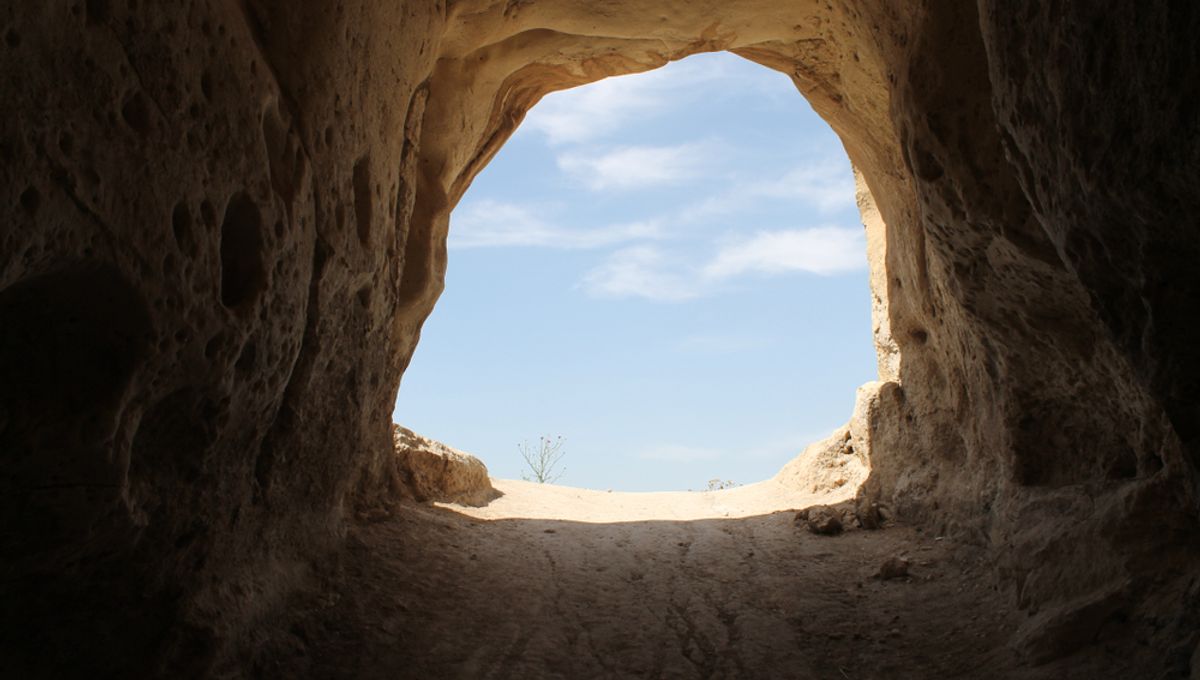
Scientists have resurrected a strange seed that was discovered in a cave in the Judean desert during the 1980s. According to radiocarbon dating, the seed was over 1,000 years old when it was found, and its DNA links it to a genus of tree that, although lost today, was mentioned in the Bible.
Named “Sheba”, the unknown species of tree has been identified as belonging to the Commiphora genus, which is a member of the Frankincense and Myrrh family (Burseraceae). There are around 200 living plant species in this family today. These trees tend to be distributed in Africa, Madagascar, and the Arabian Peninsula and have been valued for their rich aromatic gum resins or ethnobotanical uses.
Over the last 14 years, Sheba has grown into a tree that is nearly 3 meters (10 feet) tall, which has enabled scientists to describe its characteristics for the first time.
The seed that produced Sheba was dated to between 993 and 1202 CE. Although it is morphologically close to other trees in the Commiphora genus, a connection that was confirmed with DNA sequencing and phylogenetic analysis, it seems Sheba is distinct from all other sampled species. Its closest known relatives are Commiphora angolensis, C. neglecta, and C. tenuipetiolata.
It is likely Sheba is a survivor from a now-extinct population of trees from the Southern Levant region that encompasses modern-day Israel, Palestine, and Jordan.
Originally, lead author Dr Sarah Sallon at the Hadassah Medical Organization, Israel, hypothesized that Sheba may be an example of the historical “Judean Balsam” or “Balm of Judea”, a tree that was prized for its fragrance during antiquity. This tree was extensively described by Greek, Roman-Byzantine, and Post-Classical authors from the fourth century BCE to the eighth century CE.
However, Sheba lacks any aromatic compounds, so this seems unlikely.
“Based on the above findings, we refuted our initial hypothesis that ‘Sheba’ is the historical Judean Balsam cultivated in this region during antiquity and considered a second hypothesis to explain the identity of the ancient germinated Commiphora seedling,” the authors write in their study.
Instead, they believe the tree could be an example of a plant from which the Biblical “tsori” was extracted. This was a resin that was associated with healing in Genesis, Jeremiah, and Ezekiel.
“Biblical ‘tsori’, most likely the product of a local species, was associated with the historical region of Gilead in the Dead Sea-Jordan Rift valley, a mountainous, richly forested area in antiquity with a lower fertile valley (ghor) intensively cultivated throughout history,” the team added.
The idea that “Sheba” may be a living example of this long-lost but treasured tree is supported by the fact that the seed itself was found in a cave in the Dead Sea Jordan Rift Valley.
Phytochemical analysis of the tree’s leaves and resin show that it is rich in pentacyclic triterpenoids, a compound associated with wound healing, and anti-inflammatory, anti-bacterial, and anti-cancer properties.
The team also found high levels (30 percent) of squalene, an organic compound used in skin care, in Sheba’s leaves.
Another question the team were interested in addressing related to how the seed ended up in the cave site it was discovered in. They hypothesize that it could have either been deposited by an animal, or otherwise deliberately stored there by a human.
“‘Sheba’s’ deposit in the cave by an animal or bird is supported by evidence that small rodents store Commiphora seeds and its ripe fruits are eaten by birds including pigeons and doves, fauna whose remains have been found in Judean desert archaeological excavations and are still extant in the region today”, the researchers explain.
“The small number of seeds found in the cave also suggests that it was carried into the cave by animals.”
However, it is still possible the seed was stored by people. At the time when it was deposited in the cave, the Judean Balsam had disappeared from the region. There were also considerable political and social upheavals that led to economic hardships and instability. Other archaeological excavations have found that caves in the region were used to hide local goods to keep them safe.
The team said: “As the seed from a surviving member of a native species possibly associated with commerce, ‘Sheba’, may have been considered valuable enough to deliberately sequester in a cave.”
“If human intervention was involved, it may also have been brought from outside the region, possibly with the intention of reintroducing a once valuable Commiphora species.”
Although this is a possibility, it appears to be less likely than the animal deposit hypothesis. This is because there is no other evidence of material finds in the cave where the Sheba seed was found.
Further research is needed to identify other compounds in the tree’s tissue. The team conclude that “the germination of an ancient Commiphora seed from the Judean desert shows evidence for the first time of its presence in this region approximately 1,000 years ago and possible identification with a native tree or shrub whose valuable resin ‘tsori’ was associated with medicinal use in the Bible, but whose identity has long been debated.”
The paper is published in Communications Biology.
An earlier version of this article was published in September 2024.
Source Link: Scientists Resurrect A 1,000-Year-Old Biblical Tree From Ancient Seed Found In Judean Cave